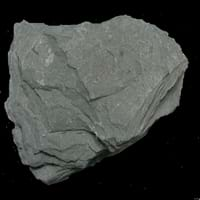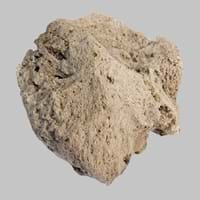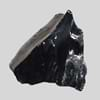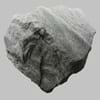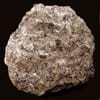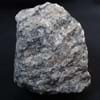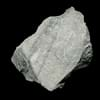Definition
Slate is a fine-grained, foliated, homogeneous metamorphic rock derived from an original shale-type sedimentary rock composed of clay or volcanic ash through low-grade regional metamorphism
Pumice is a volcanic rock that consists of highly vesicular rough textured volcanic glass, which may or may not contain crystals
Discoverer
Unknown
Unknown
Etymology
From Old French esclate, from esclat (French éclat)
From Old French pomis, from a Latin dialect variant of pumex
Class
Metamorphic Rocks
Igneous Rocks
Sub-Class
Durable Rock, Medium Hardness Rock
Durable Rock, Medium Hardness Rock
Group
Not Applicable
Volcanic
Other Categories
Fine Grained Rock, Opaque Rock
Fine Grained Rock, Opaque Rock
Texture
Foliated
Vesicular
Color
Black, Brown, Buff, Green, Light to Dark Grey, Purple, Red, Shades of Blue
Beige, Colourless, Grey, Light Green, Light Grey, Pink, White, Yellow- grey
Durability
Durable
Durable
Scratch Resistant
Yes
Yes
Appearance
Dull
Vesicular
Interior Uses
Bathrooms, Decorative Aggregates, Entryways, Floor Tiles, Flooring, Homes, Hotels, Interior Decoration, Kitchens, Stair Treads
Decorative Aggregates, Flooring, Homes, Interior Decoration
Exterior Uses
As Building Stone, As Facing Stone, Garden Decoration, Paving Stone
As Building Stone, As Facing Stone, Garden Decoration, Paving Stone
Other Architectural Uses
Curbing
Curbing, Powder
Construction Industry
As Dimension Stone
As Dimension Stone, Cement Manufacture, for Road Aggregate, In landscaping and horticulture, Making natural cement, Production of lightweight concrete blocks
Medical Industry
Not Yet Used
As an abrasive in skin exfoliating products, In Chemical and Pharmaceutical Industry, Medicines and Cosmetics
Antiquity Uses
Artifacts, Monuments, Sculpture, Small Figurines
Artifacts
Commercial Uses
Blackboards, Commemorative Tablets, Laboratory bench tops, Standard material for the bed of Billiard table, Standard material for the beds of Pool and Snooker table, Tombstones, Used in aquariums, Writing Slates
As a traction material on snow-covered roads, As an abrasive in pencil erasers, Fine abrasive used for polishing, Manufacture of Soap, Solvents, Dyes, Plastics and Fibres, Used in aquariums
Types
Not Available
Scoria
Features
Easily splits into thin plates, Surfaces are often shiny, Very fine grained rock
Host Rock for Lead
Archaeological Significance
Monuments
Used
Not Yet Used
Famous Monuments
Data Not Available
Not Applicable
Sculpture
Used
Not Yet Used
Famous Sculptures
Data Not Available
Not Applicable
Figurines
Used
Not Yet Used
Formation
Slate is a low grade metamorphic rock that is generally formed by metamorphosis of mudstone or shale, under relatively low pressure and temperature conditions.
Pumice rock forms when the magma cools so quickly that atoms in the melt are not able to arrange themselves into a crystalline structure.
Mineral Content
Apatite, Biotite, Chlorite, Feldspar, Graphite, Hematite, Kaolinite, Magnetite, Pyrite, Tourmaline, Zircon
Aluminum Oxides, Calcite, Carbonate, Iron Oxides, Silica
Compound Content
Aluminium Oxide, CaO, Iron(III) Oxide, Potassium Oxide, MgO, Sodium Oxide, Silicon Dioxide, Titanium Dioxide
Al, Aluminium Oxide, CaO, Carbon Dioxide, MgO, Silicon Dioxide
Types of Metamorphism
Burial Metamorphism, Cataclastic Metamorphism, Regional Metamorphism
Burial Metamorphism, Impact Metamorphism
Types of Weathering
Biological Weathering, Chemical Weathering, Mechanical Weathering
Biological Weathering, Chemical Weathering, Mechanical Weathering
Types of Erosion
Coastal Erosion, Glacier Erosion, Water Erosion, Wind Erosion
Chemical Erosion, Coastal Erosion, Glacier Erosion, Sea Erosion, Water Erosion, Wind Erosion
Grain Size
Very fine-grained
Fine Grained
Fracture
Splintery
Planar
Streak
Light to dark brown
White, Greenish White or Grey
Porosity
Less Porous
Highly Porous
Specific Gravity
2.65-2.8
2.86
Transparency
Opaque
Opaque
Density
2.6-2.8 g/cm3
0.25-0.3 g/cm3
Resistance
Heat Resistant, Impact Resistant, Pressure Resistant, Wear Resistant
Impact Resistant, Pressure Resistant
Deposits in Eastern Continents
Asia
China, India, Turkey
Afghanistan, Indonesia, Japan, Russia
Africa
Not Yet Found
Ethiopia, Kenya, Tanzania
Europe
Belgium, France, Germany, Italy, Norway, Portugal, Spain, United Kingdom
Greece, Hungary, Iceland, Italy, Turkey
Others
Arctic
Not Yet Found
Deposits in Western Continents
North America
USA
Bahamas, Barbados, Canada, Costa Rica, Cuba, Jamaica, Mexico, USA
South America
Brazil
Argentina, Chile, Ecuador, Peru
Deposits in Oceania Continent
Australia
Not Yet Found
New Zealand, Western Australia
All about Slate and Pumice Properties
Know all about Slate and Pumice properties here. All properties of rocks are important as they define the type of rock and its application. Slate belongs to Metamorphic Rocks while Pumice belongs to Igneous Rocks.Texture of Slate is Foliated whereas that of Pumice is Vesicular. Slate appears Dull and Pumice appears Vesicular. The luster of Slate is dull while that of Pumice is earthy. Slate is available in black, brown, buff, green, light to dark grey, purple, red, shades of blue colors whereas Pumice is available in beige, colourless, grey, light green, light grey, pink, white, yellow- grey colors. The commercial uses of Slate are blackboards, commemorative tablets, laboratory bench tops, standard material for the bed of billiard table, standard material for the beds of pool and snooker table, tombstones, used in aquariums, writing slates and that of Pumice are as a traction material on snow-covered roads, as an abrasive in pencil erasers, fine abrasive used for polishing, manufacture of soap, solvents, dyes, plastics and fibres, used in aquariums.
